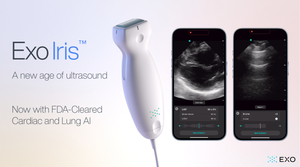By 2014, $2.6 trillion in global manufactured goods, or about 15% of total global output, will incorporate nanotechnology, according to the independent advisory firm Lux Research (New York City; www.luxresearchinc.com). One of the areas where the continued growth will be most apparent is in the healthcare sector. Nanotechnology research with implications for the medical device industry is progressing rapidly, and academic institutions and medical device firms continue to make strides in bridging the gap between research and commercialization. The University of California at Los Angeles has announced the launch of the California NanoSystems Institute (Los Angeles; www.cnsi.ucla.edu), created with the expressed purpose of fostering partnerships between industry and university researchers. Elsewhere in the world, a recently formed company in the United Kingdom, NanoCentral (www.nanocentral
March 15, 2008
Originally Published MPMN March 2008
SPECIAL FEATURE: EMERGING TECHNOLOGIES
Unearthing New Opportunities on the Nanoscale
By 2014, $2.6 trillion in global manufactured goods, or about 15% of total global output, will incorporate nanotechnology, according to the independent advisory firm Lux Research (New York City; www.luxresearchinc.com). One of the areas where the continued growth will be most apparent is in the healthcare sector. Nanotechnology research with implications for the medical device industry is progressing rapidly, and academic institutions and medical device firms continue to make strides in bridging the gap between research and commercialization. The University of California at Los Angeles has announced the launch of the California NanoSystems Institute (Los Angeles; www.cnsi.ucla.edu), created with the expressed purpose of fostering partnerships between industry and university researchers. Elsewhere in the world, a recently formed company in the United Kingdom, NanoCentral (www.nanocentral.eu), offers to advise and assist companies in implementing nanotechnology equipment and services within existing business models. In this feature, MPMN reports on several advancements in nanotechnology that have the potential to revolutionize medical product manufacturing in the years ahead. The innovations covered could have applications as varied as drug delivery, power supply, implantable device components, diagnosis, and detection.
Nanotubes Enable Development of Paper-Thin Battery
Toss a paper airplane, and, for a few entertaining seconds, there is the illusion of flight. But in the not-so-distant future, flying paper could cease to be illusory, thanks to a new electrical component made almost entirely of paper. The component can function as a battery, a supercapacitor, or a hybrid of both. Researchers anticipate a wide variety of applications for the component, including a number of novel possibilities related to medical devices, according to findings published in the August 13 issue of the Proceedings of the National Academy of Sciences.
Sensor Could Provide Forewarning of Asthma Attacks
A recently developed nanotube sensor is reactive to minute amounts of nitric oxide, a gas prevalent in the breath of asthmatics, according to University of Pittsburgh (Pittsburgh, PA) professors who developed the sensor. If fitted in a handheld device, the tiny component could allow users to remove the element of surprise from asthma attacks. In addition to detecting attacks early on, a device incorporating the sensor could provide a portable method for patients and their doctors to regularly monitor their symptoms and tailor treatment accordingly.
Nanostructures Get in Shape for Drug Delivery
Block copolymers can be found in rubber soles for shoes, and, more recently, in portable memory sticks (flash drives) for computers. Soon, the material might be found in the human body as well. Researchers have discovered how to make synthetic polymer molecules assemble and form into long cylinders, a nanostructure potentially suited for drug-delivery applications. The finding was first reported in the August issue of Science by a research team lead by Darrin Pochan, associate professor at the University of Delaware (Newark, DE), and Karen Wooley, professor at Washington University (St. Louis).
Emerging Challenges: Nano Surveys Serve Disconnection Notices
Firms commercializing nanotechnology lack a clear procedural roadmap for navigating governmental environmental, health, and safety (EHS) standards, according to a new survey conducted by the Project on Emerging Nanotechnologies (www.nanotechproject.org). Many firms also lack the necessary information to meet regulatory expectations.
Software Provides Peek into the Body--and the Future
Actual in-body nanorobots for the purposes of diagnosing and treating harmful conditions on the cellular level are years away. For now, scientists can only imagine. Nanorobot prototyping software, however, may allow researchers to use their imaginations in more sophisticated ways.
Copyright ©2008 Medical Product Manufacturing News
You May Also Like


